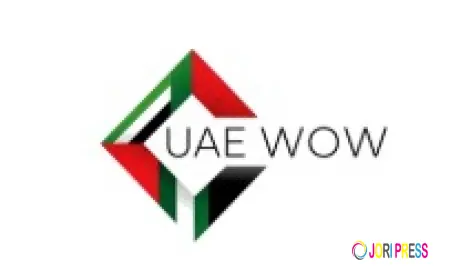Infrastructure as Code (IaC) Market 2030 Insights – Growth Trends, Top Companies & Forecast
According to TechSci Research report, “Infrastructure as Code (IaC) Market - Global Industry Size, Share, Trends, Competition Forecast & Opportunities, 2030F", The Global Infrastructure as Code (IaC) Market was valued at USD 887.98 Million in 2024 and is expected to reach USD 3264.94 Million by 2030 with a CAGR of 24.24% through 2030.
As organizations ramp up cloud-native adoption, the IaC paradigm has emerged as a critical enabler—automating environment provisioning, embedding security policy and compliance guardrails, and reducing costly misconfigurations.
Request For Sample Copy of Report For More Detailed Market insight: https://www.techsciresearch.com/sample-report.aspx?cid=29870#requestform
Emerging Trends
A. Security as Code & Policy‑First Approaches
Infrastructure complexity and compliance demands—especially in finance, healthcare, and government—have ushered in a shift toward embedding policy checks directly in provisioning pipelines.
Modern IaC stacks incorporate automated policy enforcement using frameworks like Open Policy Agent (OPA). Enterprises now apply "guardrails before deployment" rather than conduct audits afterward—resulting in a 66% drop in compliance violations and 45% reduction in misconfigurations annually.
B. GitOps & Declarative Pipelines
The rise of GitOps means IaC definitions are stored in version-controlled repositories, with changes deployed through pull request workflows. This enables transparent reviews, audit trails, and rollback capability—essential for accountability, traceability, and regulatory oversight in modern environments.
C. AI/ML‑Augmented IaC
Integrating AI/ML within IaC workflows is becoming mainstream. Intelligent pipelines now suggest optimized configurations, detect anomalies in provisioning code, and auto-heal misconfigurations before deployment—boosting reliability and reducing human error.
D. Immutable Infrastructure Adoption
Immutable patterns—where infrastructure is never modified post-deployment, only replaced—are gaining traction. IaC acts as the backbone for these blue-green deployments, ensuring consistency, auditable history, and rollback capability across all environments.
Browse over XX market data Figures spread through XX Pages and an in-depth TOC on the "Global Infrastructure as Code (IaC) Market"@https://www.techsciresearch.com/report/infrastructure-as-code-iac-market/29870.html
E. Multi‑Cloud & Hybrid‑Cloud Governance
Over three-quarters (76%) of enterprises operated in multi- or hybrid-cloud environments by late 2024. Managing such heterogeneity demands IaC capabilities for federated governance, unified configuration management, and interoperable resource modeling across providers.
F. Developer Empowerment & Self-Service
IaC enables self-serve internal "platform-as-a-service" for development teams. Engineers can deploy pre-approved stacks via portals, reducing wait time and error rates. This now-common paradigm strengthens DevOps and accelerates innovation.
Key Market Drivers
1. Escalating Infrastructure Complexity
Cloud-native adoption—spanning multi-cloud, containerization, edge, and microservices—has introduced facets too complex for manual control. IaC’s structured definitions simplify provisioning reliably at scale.
2. Security & Compliance Imperatives
Governed industries cannot tolerate insecure setups. Embedding policy-as-code enforcement within provisioning pipelines ensures that every deployed resource is secure by design.
3. DevOps Evolution & Automation
IaC is a foundational pillar of DevOps and Site Reliability Engineering (SRE) practices. It facilitates CI/CD workflows, zero-drift configurations, and version control—all pivotal for modern operations.
4. Immutable & Ephemeral Infrastructure Models
Immutable infrastructure demands automated, repeatable builds that IaC excels at, ensuring environment consistency and reducing drift over time.
5. Developer Experience & Agility
Self-service provisioning through versioned IaC modules and developer sandboxing reduces bottlenecks and empowers agile development.
6. Cost Management & Optimization
IaC helps define resource limits and usage for cost predictability. Combined with governance policies, it prevents overprovisioning and surprises in cloud bills.
7. Rising Ecosystem & Tooling Maturity
A rich landscape of tools—Terraform, Pulumi, AWS CDK, Puppet—plus integrations with GitOps and policy engines, make IaC adoption more accessible and extensible.
8. Regulatory Pressure & Auditability
Regulatory frameworks require detailed reporting. IaC’s declarative state and change history logs offer built-in auditing, aligning with compliance mandates effortlessly.
Competitive Analysis
HashiCorp
-
Market pioneer with Terraform—a multi-cloud, declarative IaC staple.
-
Provides collaboration via Terraform Cloud, Sentinel (policy-as-code), and private registry for modules—strong governance and enterprise integration.
Amazon Web Services (AWS)
-
Native tools: AWS CloudFormation, CDK, and resource pipelines
-
Enables IaC compliance for AWS-native environments; integrates with AWS Config and IAM for policy enforcement.
Google Cloud (GCP)
-
Offers Cloud Deployment Manager and Terraform Google provider
-
Focus on Kubernetes-native stacks using Config Connector and Anthos multi-cloud infrastructure provisioning.
Puppet
-
Configuration management leader that now supports push-based infrastructure automation.
-
Provides enterprise-grade governance and Drift remediation capabilities.
Microsoft Azure
-
Supports Azure Resource Manager (ARM) templates, Bicep, and Terraform provider
-
Strong hybrid story through Azure Arc and GitOps integrations in Azure DevOps.
VMware
-
Offers IaC offerings for private cloud environments via VMware Aria
-
Positioned as bridge between on‑prem and VMware cloud via unified automation.
Pulumi
-
Enables IaC in general-purpose languages (TypeScript, Python, Go)
-
Appeals to developers who prefer familiar syntax and programmable infrastructure flows.
BMC Software
-
Integrates IaC within enterprise ITSM and operations
-
Focuses on audit trails and change management aligned with ITIL practices.
Sector & Regional Highlights
BFSI – Leading the Pack
Financial Services (BFSI) is the fastest-growing vertical for IaC adoption:
-
Digital banking, real-time payments, and service innovation rely on fast, secure deployments.
-
IaC ensures consistent configuration across multi-cloud/back-office workloads and reduces human error in compliance.
-
Integrated with DevSecOps, IaC has led to 66% drop in compliance violations and 45% reduction in misconfiguration events within a year—a dramatic improvement in risk posture.
Asia Pacific – Growth Engine
The Asia Pacific region emerged as the fastest-growing market in 2024:
-
Expanding cloud infrastructure in China, India, Japan, and South Korea
-
Governments sponsoring cloud-native modernization initiatives
-
Rising DevOps practices among enterprises and startups
-
Strong investments in AI, fintech, healthtech, and smart city infrastructure—driving IaC adoption for scalability, audit readiness, and automation.
Future Outlook
Looking ahead to 2030, the IaC market will continue evolving, propelled by several forces:
1. GitOps-Driven Automation
IaC stored in Git becomes the single source of truth. Changes trigger automated reconciliations across environments, with drift detection and rollback—delivering self-healing environments at scale.
2. AI-Powered IaC Workflows
AI agents will aid IaC—suggesting optimized modules, auto-fixing errors, and even building stub infrastructure flows based on verbal prompts. This “IaC copilots” are on the horizon.
3. Edge & Multi-Cluster Provisioning
Support for provisioning edge clusters, IoT gateways, and branch office infrastructure via unified codebases—extending IaC beyond core cloud environments.
4. Verticalized IaC Blueprints
Pre-built, policy-enforced IaC templates for regulated sectors—such as healthcare-compliant stacks, finance-grade setups, manufacturing controls—will simplify adoption for enterprises.
5. Immutable and GitOps Standardization
Immutable infrastructure and commit-driven deployments will become universal best practices—cementing IaC as standard operating model.
6. Self-Service Enterprise Platforms
Platform teams will layer IaC modules into self-service catalogs for developers—enabling “push-button infrastructure” while maintaining compliance and governance centrally.
10 Benefits of the Research Report
This in-depth TechSci Research report offers the following tangible advantages:
-
Comprehensive Market Overview
-
Detailed sizing, historical data, and forward-looking forecasts to 2030
-
-
Segment Analysis
-
Insights across deployment types, infrastructure types, and key verticals (BFSI, Healthcare, IT & Telecom)
-
-
Tool & Vendor Comparison
-
Benchmarking leading IaC ecosystems (HashiCorp, AWS, Microsoft, etc.) and their feature differentiation
-
-
Trend Spotting
-
Coverage of AI integration, security-as-code, GitOps, and immutable infrastructure
-
-
Regulatory & Compliance Frameworks
-
Guidance on policy-as-code integration for industries like finance and healthcare
-
-
Geographic Localization
-
Deeper analysis of Asia Pacific fueling growth, plus global regional breakdowns
-
-
Strategic Insights for DevOps Leaders
-
Recommendations for implementing IaC at scale, enabling self-service, and driving governance
-
-
Risk & Barrier Mapping
-
Identification of pitfalls—skills shortages, legacy integration, organizational inertia
-
-
Investment & Acquisition Perspective
-
Highlights of consolidations in IaC tooling, potential M&A targets, and growth partnerships
-
-
Actionable Roadmap
-
Clear guidance to build IaC champions in organizations, from POC to enterprise-wide deployment
Customers can also request for 10% free customization on this report.
Conclusion
The Infrastructure as Code (IaC) Market, valued at USD 887.98 million in 2024 and projected to grow to USD 3.26494 billion by 2030, is a strategic driver of modern cloud operations. By embedding policy guardrails, accelerating consistent provisioning, enabling self-service workflows, and bolstering DevOps practices, IaC is no longer optional—it’s the backbone of scalable infrastructure governance.
Techsci Research LLC
420 Lexington Avenue, Suite 300,
New York, United States- 10170
Tel: +13322586602
What's Your Reaction?
 Like
0
Like
0
 Dislike
0
Dislike
0
 Love
0
Love
0
 Funny
0
Funny
0
 Angry
0
Angry
0
 Sad
0
Sad
0
 Wow
0
Wow
0



















































